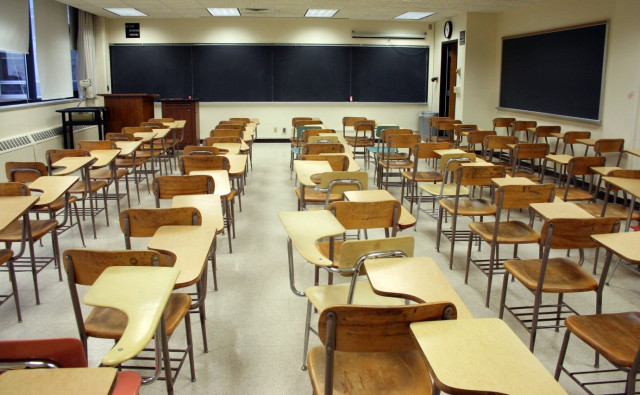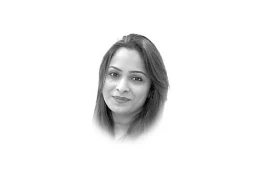
The ASER 2019 (rural) Pakistan — recently launched on February 10, 2020 at the Federal Ministry of Planning, Development and Special Initiatives — is a milestone report for several reasons. It has become a non-rivalrous global public good; a citizen-led assessment with data at scale for lower primary learning (Grades 2 and 3) through nationwide capacity building and large networks. Although Pakistan is not out of the woods with complex “learning crises”, evidence shows that there are signs of the needle moving, attributable to both demand and supply side efforts at the government and household levels. The ASER trends from 2014-2019 are encouraging as they show an upward movement on learning levels, mother’s education and overall household choices to enroll children across public and private education systems in rural areas.
The learning levels from 2014-2019 for Grade 5, as measured by lower primary (Grade 2) assessment tools, reveal that there has been an overall improvement of 13-17%. This is no mean achievement and must be celebrated. The challenges at the sub-national levels deserve urgent attention, especially in Sindh.

The good news is that children who manage learning better also do it deeper. For instance, of the 59% children in Grade 5 who are at the story level, 85% could also respond to questions related to the story. Whilst we celebrate this much-awaited shift, there is little room for complacency. We must register that 14% children in Grade 8, 41% in Grade 5 and 82% in Grade 3 cannot read with comprehension in Urdu, Sindhi or Pashto. The learning crisis thus persists. The learning challenges in these grades (3, 5 and 8) point towards a foundational learning gap for early years in our national education system (ECE and Grades 1 and 2). It is time to divert our attention to the basics in literacy and numeracy at the right time, where children learn much through social-emotional and cognitive nurturing that helps them build self-control, memory connections for prioritisation, problem solving skills, creativity and imagination.
These foundational gaps are amplifying the call for action to address a key concern whereby, “enrolment/schooling does not always mean learning!” It is precisely these challenges that have given birth to the term “learning poverty” by the World Bank. The metric indicates that all 10-year-olds in low and middle income countries cannot read and understand a simple text, whether they are in school or out of school. Jamie Saavedra has raised a call for urgent attention to this “silent crisis” where governments must urgently shift their focus and treating learning not as a consumption but as an investment.
Moreover, enrolment choices at public and private facilities, as recorded by the ASER (rural) from 2014-2019, present a distinct shift in households opting for public sector schools, where the overall enrolment having increased from 70% in 2014 to 77% in 2019 with a commensurate decrease from 30% to 23% in the private sector share. It speaks volumes about the government efforts over the past few years to improve public sector facilities, ensuring teachers’ presence and merit-based recruitments. This focus must remain front and centre to the education enterprise.
Furthermore, Teacher Attendance Trends (2014-2019) reveal that over the past 10 years, due to political will and assistance from technology driven biometric and third-[party solutions for improved governance, teacher attendance has improved. The online capturing of who is in school and who is not through the use of technology and artificial intelligence-driven initiatives has improved accountability and transparency. Over the past three years, teachers’ presence in public sector schools has been 89%, almost at par with private schools. Let us push it to 95%!
Mothers with primary education are a rich untapped resource which has shown an increase from 24% to 35% from 2014 to 2019. This is promising as mothers are the first port of call for inter-generational support to promoting education and learning. Whenever there is a call to action, it is the mothers who show up readily for action. We need to pay more attention to young mothers across Pakistan as a catalytic multiplier group.
There are many takeaways from the ASER 2019 but three have been summarised below.
We have improved in learning in Grade 5 but the lower primary assessment tool reveals that learning remains fragile at Grade 3 and even at Grade 8 where 82% and 14% children, respectively, are not competent in even Grade 2 minimum proficiency levels. The learning crisis persists and calls for urgent attention at the foundational levels ECE and Grades 1 and 2. We are a long way away from the promise of Article 25(A) and SDG 4!
There is a clear shift in enrolment from private to public schools. This shows that when the government persists with positive interventions in facilities and better teacher recruitment and presence, there are positive gains in public choices. We must continue walking this pathway with continued political and administrative will.
Investing in the education of girls and that of young mothers is critical in Pakistan to not only reduce gender gaps for gender equality, but for investing right for generational gains in learning and livelihoods. Girls can fly high in any discipline; they just need to be given a chance.
#LeaveNoGirlBehind; #GirlsLearnWomenEarn and #AlifSayUraan
Published in The Express Tribune, February 18th, 2020.
Like Opinion & Editorial on Facebook, follow @ETOpEd on Twitter to receive all updates on all our daily pieces.













COMMENTS
Comments are moderated and generally will be posted if they are on-topic and not abusive.
For more information, please see our Comments FAQ